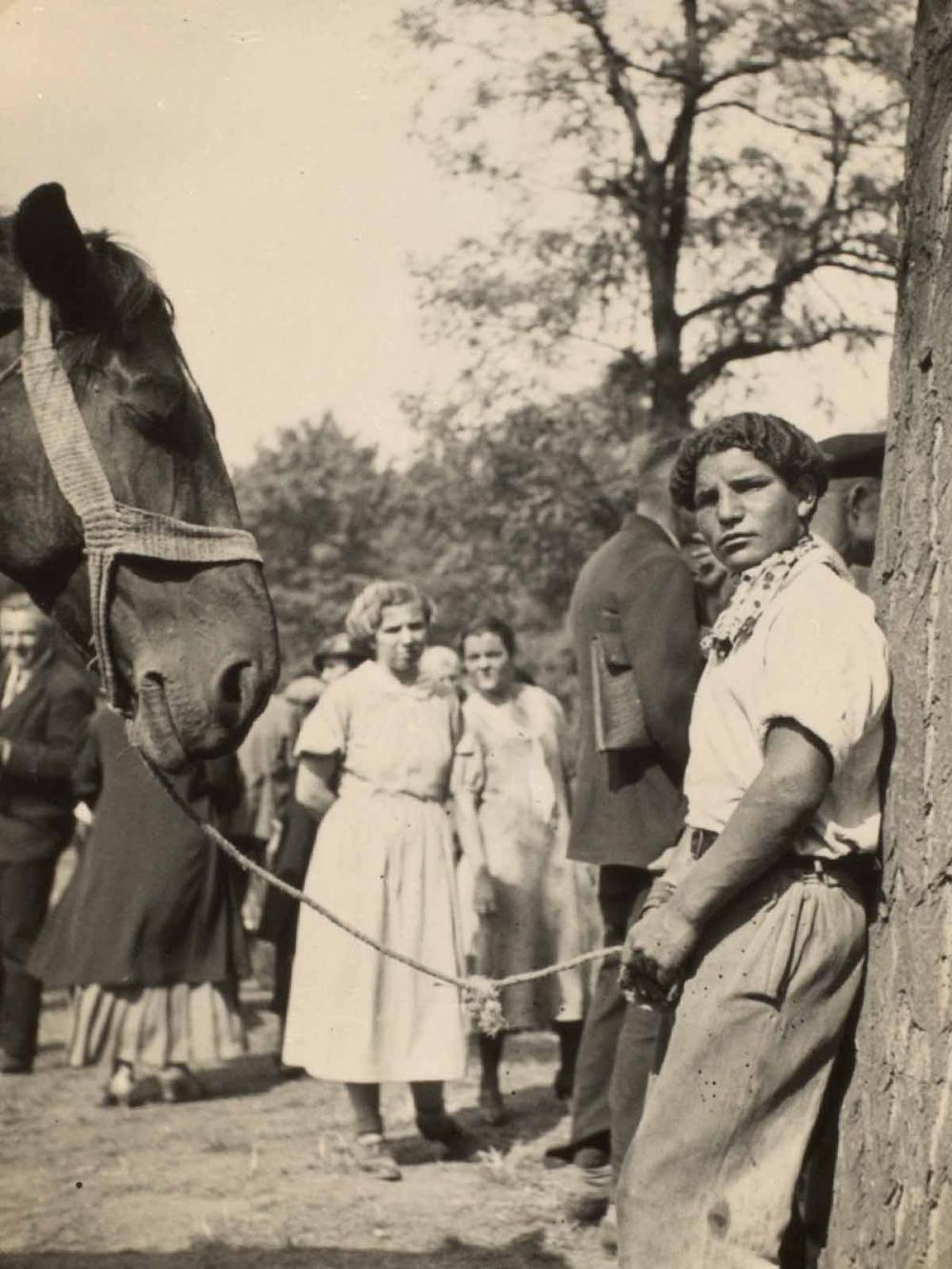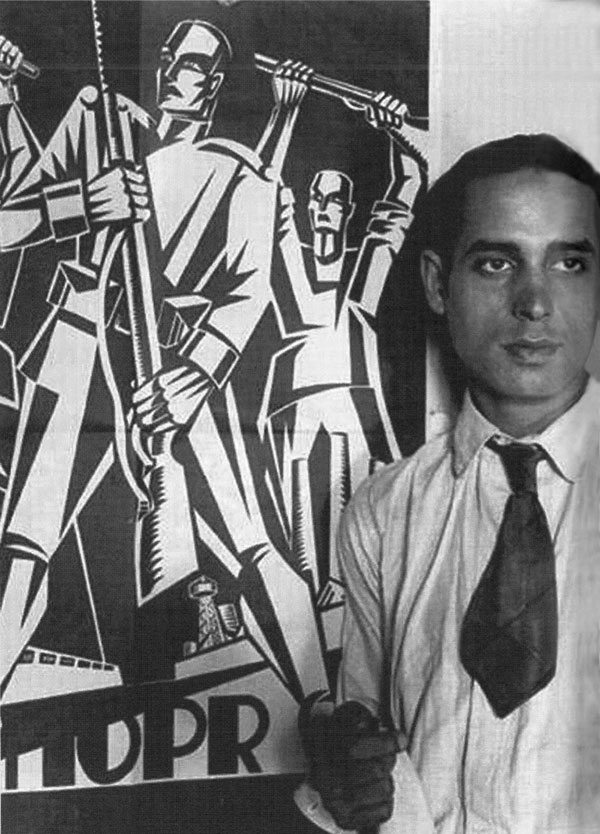
German horse fair, 1935. Liverpool University Library Special Collections

Helios Gómez with a work. Crónica, 1929
BESTROM explores the cultural contribution to Europe’s public space/s of its Romani minorities (Roma, Sinti, Manouche, Gitanos, and others), considering them as agents in the processes of building shared European commons and identities. Approaching them as active subjects of cultural production, the research goes beyond scholarship that treats “Gypsies” as passive objects of othering. It can challenge popular stereotypes, promoting acceptance of diversity and critical reflection on otherness. It is a project that has both political and ethical urgency, given the current rise of exclusionary nationalisms across Europe, the hardening of borders and resistance to exchange, one of whose features is the transference of long-standing prejudices against “Gypsies” to new migrant groups.
In order to do so, BESTROM proposes an analysis of interactions within European public spaces which necessarily involves a critical approach to the notion of integration. Cultural exchange between Romani groups and mainstream societies cannot be studied without acknowledging the underlying problems of inequality and asymmetries of power. The project accordingly takes account of existing inequalities in the spaces under analysis, assessing the scope for Romani people to act as cultural agents even in disadvantageous contexts. Here, practices such as contestation, resistance, and hybridity can transform conflict into a source of creative innovation, with the potential to enrich particular public spaces. As long-term or periodic contact zones, those spaces can act as gateways to the acceptance of diversity, by fostering familiarity based on difference.
We think that analysing the Romani case can contribute to our understanding of other minorities and the ways in which cultural diversity shapes public spaces more generally. This involves a challenge to the long-standing notion of the exceptional status of Roma among Europe’s minorities and the associated vision of historical failures to integrate. BESTROM builds instead on the evidence for their participation in European public spaces, despite poverty, lack of educational opportunities, and persistent stigmatization. We thus propose to reverse the conventional account, suggesting that the cultural border-crossing practised by Romanies past and present must be considered in terms of its impacts on shared national and transnational European cultures – that these eternal outsiders were always insiders. This approach can provide a model for studying other minorities.
Our overall objective, then, is to examine the contribution made by diverse Romani groups to the construction of public spaces, deploying historical, ethnographic and musicological methods. Both research design and public engagement have been informed at each stage by collaborations with partners from Romani communities, including cultural producers and activists.
BESTROM case studies have regional foci but are conceived in transnational terms, sensitive to comparisons and transfers.
- Research on the Romani contribution in the political sphere explores the ways in which the actions of Romani activists and intellectuals have served to open up the space of European citizenship, necessitating the reconsideration, expansion and enrichment of traditional civic categories. This study takes a biographical approach to political activism in Spain, France, Great Britain and Germany.
- A study of the aural presence of Roma music as a transnational element of European public space, with a regional focus on throughout Eastern and Western Europe, examines historical examples of musical performance in urban space and the involvement of Romanies in contemporary international music festivals. It considers how Romani musicians actively shape the space they share with non-Roma through music.
- Horse fairs in England and Germany in the late nineteenth and early twentieth centuries are examined in a third study, exploring spaces which combined economic and leisure activities with opportunities for the display of both difference and intercultural competence. It asks how inequalities structuring market exchanges might interact productively with social differences to sustain positive cultural and economic relationships.
- An examination of Romani groups in the public space of the circus considers circuses as cosmopolitan and mobile spaces and analyses how (and how far) they functioned historically as gateways for the acceptance of otherness. It compares the cases of Germany and Denmark, in terms of the role that circuses played in the construction of nation-state narratives and the implication of Romani actors in those processes.
By exploring these four case studies, the project enables understanding of the significance and the complexities of Romani interactions and their impact upon the making of European space(s) and discourses. Crucially though, it also highlights the importance of their social, geographical or temporal uniqueness and socio-cultural embeddedness. Here public and cultural spaces are envisaged and investigated as distinctive yet overlapping, as shared and as contested.
